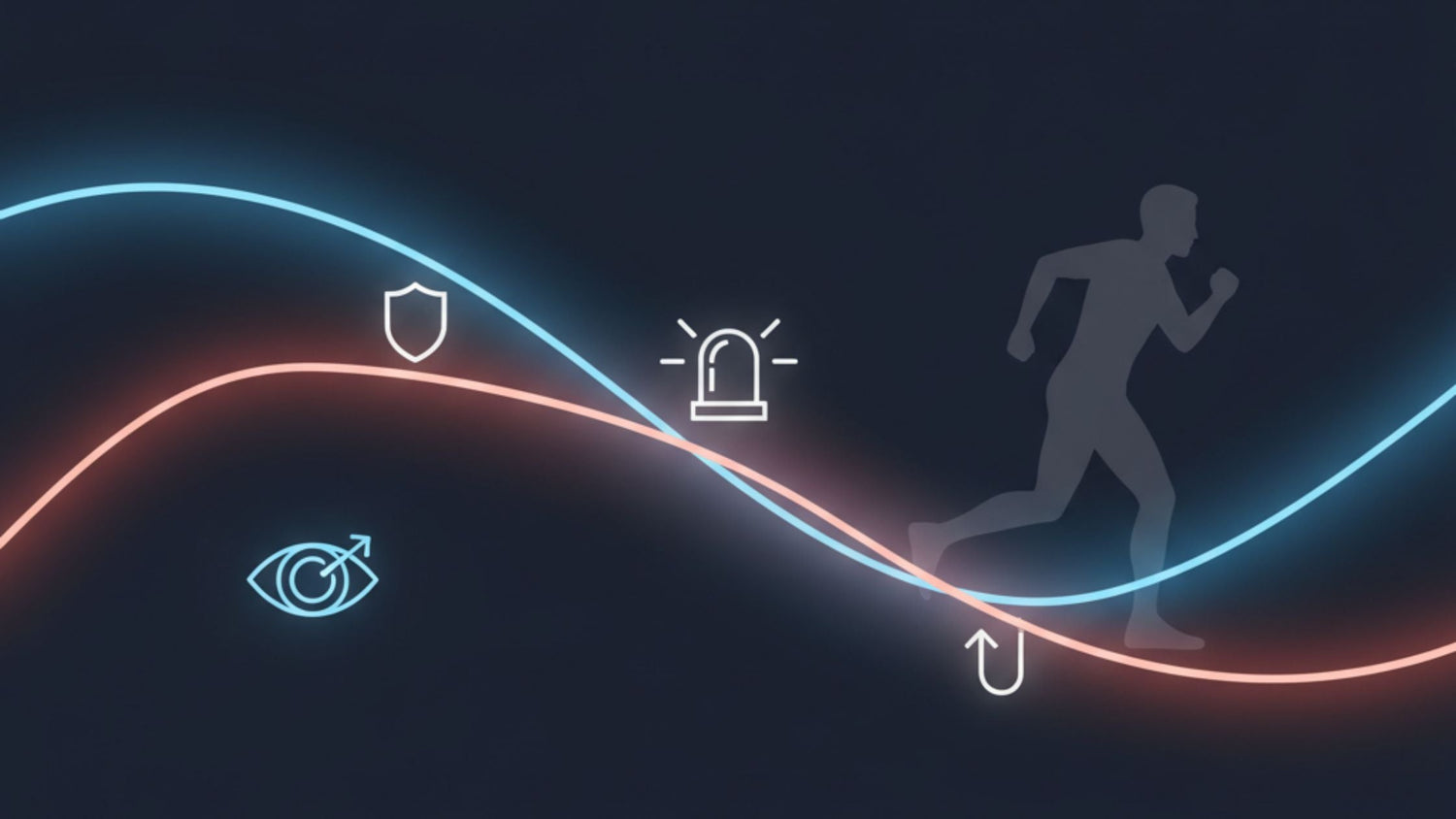Jogging alone can be one of the most liberating ways to start or end your day. The rhythm of your steps, the music in your ears, the calm of an empty road - it’s a moment of peace. But for women and solo runners, it’s also a moment that demands awareness.
Safety while jogging isn’t about being fearful. It’s about being prepared, alert, and confident in your surroundings. Here’s a guide to help you enjoy your run while staying secure every step of the way.
1. Plan Your Route Wisely
Before you lace up your shoes, choose your route with intention.
Stick to well-lit paths, public parks, or areas with regular foot traffic. Avoid shortcuts through isolated streets or dimly lit corners, especially early in the morning or late at night.
Use tools like Google Maps to check the area and share your live location with a trusted contact before you start. A quick check now can prevent risky situations later.
2. Ditch the Distractions
Music can fuel your pace, but it can also block awareness. If you’re jogging alone, keep one earbud out or lower the volume so you can hear footsteps, vehicles, or voices around you.
Avoid constant phone checking or replying to messages mid-run. Your focus should be on your stride and surroundings.
3. Carry a Personal Safety Device
One of the smartest things you can do as a solo runner is to carry a self-defense tool.
A personal safety alarm for runners, like BoomBird Aero, is compact, rechargeable, and loud enough to draw instant attention up to 130 decibels.
Clip it on your waistband, arm strap, or water bottle holder with a single press, it activates a powerful siren and strobe light that can disorient a threat and signal help immediately.
For night jogs, BoomBird Aero doubles as a visibility light, keeping you safe, confident, and easy to spot even in dimly lit areas.
4. Stay Aware of Your Environment
Trust your instincts.
If you feel like someone is following you or something feels off, change direction or cross the street. It’s better to appear overly cautious than to ignore warning signs.
Avoid narrow alleys and routes that are too quiet. Keep your phone accessible, but not in your hand, and avoid pausing in dark corners to check messages.
5. Learn Simple Self Defense Moves
You don’t have to be a martial artist to protect yourself.
Learn a few practical self-defense techniques that focus on freeing yourself and escaping, not fighting. For example:
-
Target soft areas like eyes, nose, or knees if grabbed.
-
Use a self-defense tool like a Kubaton (BoomBird Spike) for close range impact.
-
Keep your keychain or alarm in hand for quick activation.
Confidence and preparation are your best shields.
6. Adjust Your Routine for Visibility
Try to run during daylight whenever possible. If your schedule only allows early morning or late evening runs, wear reflective gear and bright clothing.
Pair this with a clip-on safety light or a distress signal device for extra visibility.
Even small changes like choosing a path near streetlights can make a big difference.
7. Build a Pre-Run Safety Routine
Take two minutes before every run to go through your personal safety checklist:
-
Phone charged and location sharing on
-
Alarm device or self-defense tool within reach
-
Route shared with someone you trust
-
Proper visibility gear for the time of day
This quick habit builds confidence and readiness over time.
Final Thoughts
Running alone can be freeing, empowering, and grounding. But it should never feel unsafe.
By planning ahead, staying alert, and carrying a personal safety alarm or self-defense tool, you turn every jog into a confident stride toward independence.
Your pace, your path, your safety always in your control.
Stay safe. Stay confident. Stay BoomBird.
FAQs
Q1. What’s the best self-defense tool for women joggers?
The BoomBird Aero is perfect for solo runners. Its magnetic clip-on design attaches securely to your waistband or arm strap, and with one press, it triggers a 130dB siren and strobe light to draw attention fast keeping you safe and visible on night runs.
Q2. Can I use pepper spray while running?
Yes, but it’s more practical for slow-paced movement or walking. For runners, a keychain alarm or Kubaton offers faster activation and easier grip.
Q3. Is it safe to run with my phone in hand?
It’s better to keep your phone in an armband or pocket to prevent distraction. Use smartwatches or safety alarms for quick SOS alerts instead.
Q4. How loud should a runner’s alarm be?
Anything above 120 dB is effective. BoomBird alarms reach 130 dB, loud enough to disorient threats and attract attention even in open areas.
Q5. What’s the simplest way to boost my jogging safety today?
Start carrying a safety alarm, stay aware of your surroundings, and share your route. Small steps create big confidence.





